Measurements of Bismuth Absorber
Darren Dowell -- (626)395-6675 (office), -2600 (lab), 796-8806 (FAX)
Last modified Sunday, 25-Feb-2001 9:51 PST
cdd@submm.caltech.edu
SHARC II absorber, cold DC resistance -- February 2001
Cold electrical resistance measurements of witness samples prepared and
measured by Christine Allen (GSFC) are shown below:
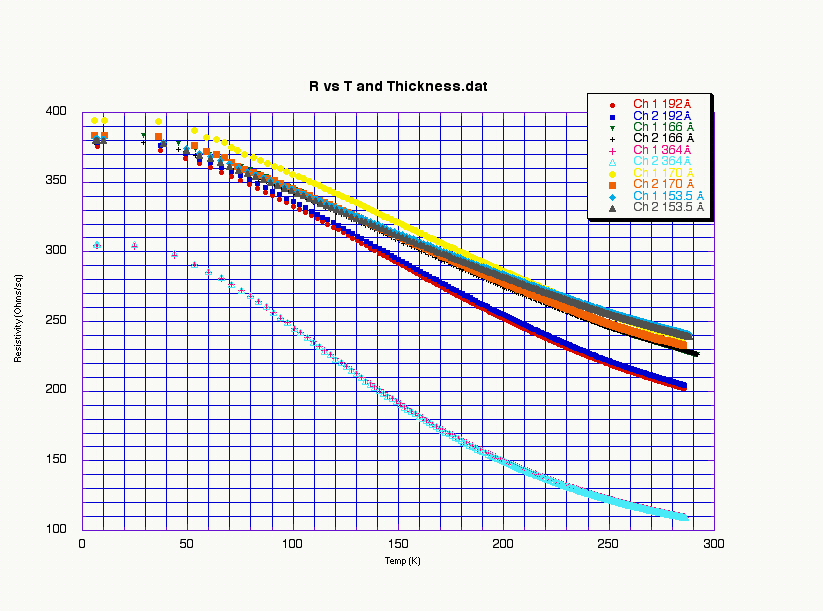
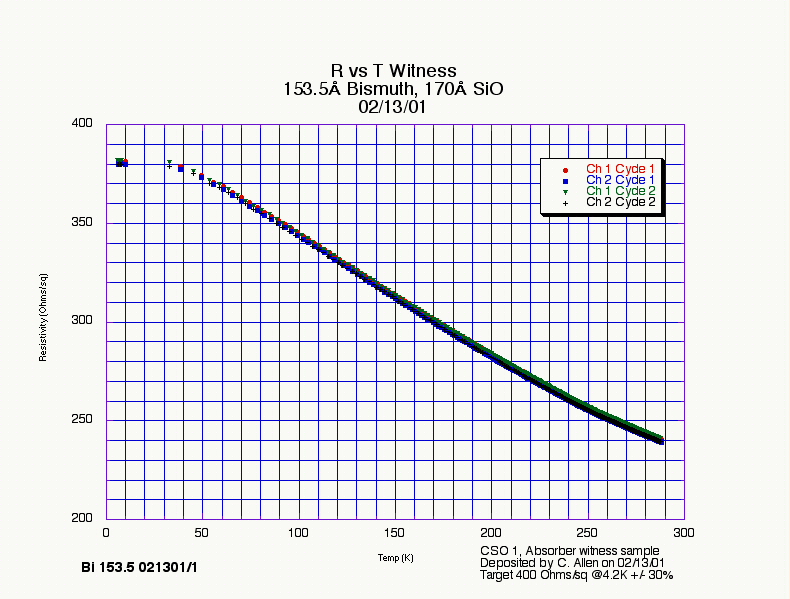
SHARC II absorber, FTS characterization -- February 2001
Christine Allen (GSFC) deposited 154 Angstroms bismuth and 175 Angstroms SiO
on a silicon wafer provided by Mino Freund (GSFC). Ken Stewart (GSFC) measured
the cold transmission of the coated wafer as well as an uncoated one on
February 23, 2001. The
transmission spectra were modeled using the equations of Clarke et al. (1977).
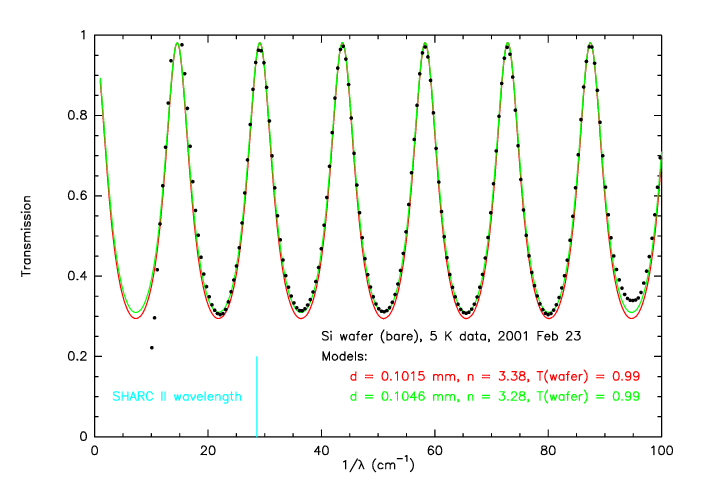
Figure 1. Cold transmission spectrum of bare wafer. The red curve
shows the
best 'by-eye' fit to the data (black dots)
using the index of refraction of silicon (n = 3.38) from Loewenstein et al.
(1973). The green curve shows the index of refraction (n=3.28) which best
fits the transmission minima. In both cases, an absorption of 1% was found.
The wafer thickness (101.5 and 104.6 microns) was treated as a free parameter
and was fit using the fringe spacing.
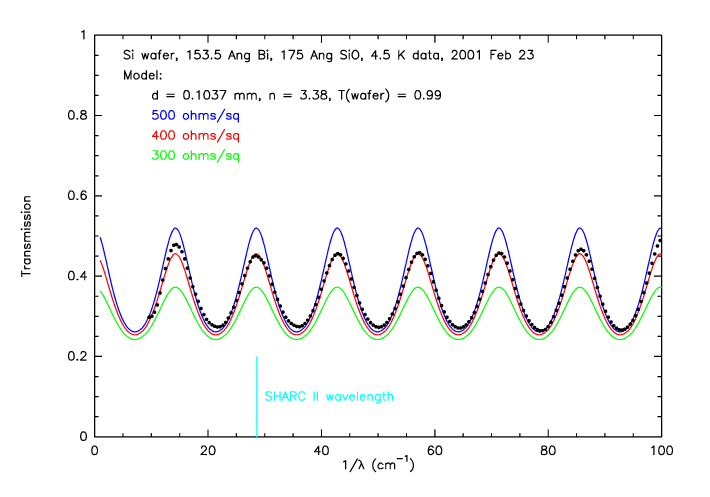
Figure 2. Cold transmission spectrum of coated wafer. For the
models, the
Loewenstein et al. (1973) index of refraction for silicon is used, and the
silicon absorption (1%) is the same as in Figure 1. The green, blue, and
red curves show the predictions for 300, 400, and 500 ohms/square. The
resistance which best fits the data (black dots) is approximately 430
ohms/square. The wafer thickness was fit to be 103.7 microns.
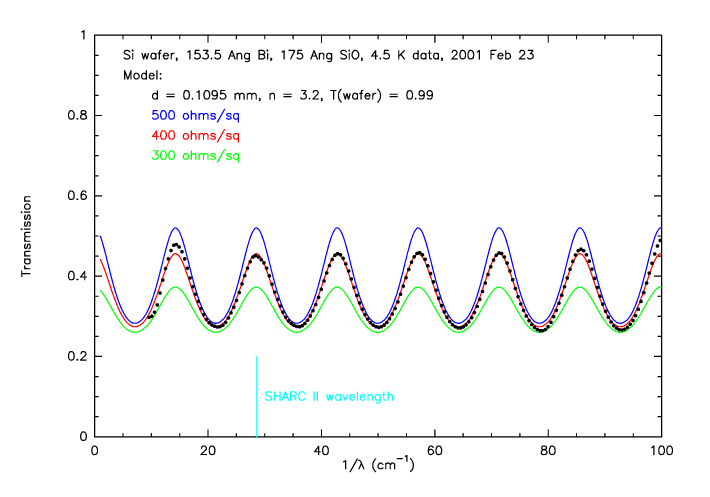
Figure 3. Cold transmission spectrum of coated wafer. For these
models, the
index of refraction (n = 3.2) was optimized to best fit the fringes. The
silicon absorption (1%) is the same as in Figure 1. The green, blue, and
red curves show the predictions for 300, 400, and 500 ohms/square. The
resistance which best fits the data (black dots) is approximately 400
ohms/square. The wafer thickness was fit to be 109.5 microns.
CONCLUSION: This bismuth deposition recipe produces 400 ohms/square DC
(electrical) on the witness sample and 400 ohms/square in the far-IR (optical)
on the FTS sample wafer. The SHARC II target resistance is 400 ohms.
THEREFORE, THE FIRST SHARC II BOLOMETER DEPOSITIONS SHOULD USE THIS ABSORBER
RECIPE.
Go to SHARC II home page...




